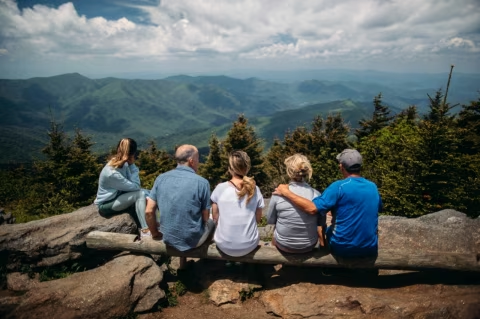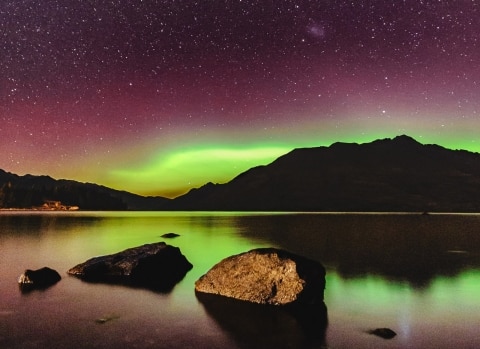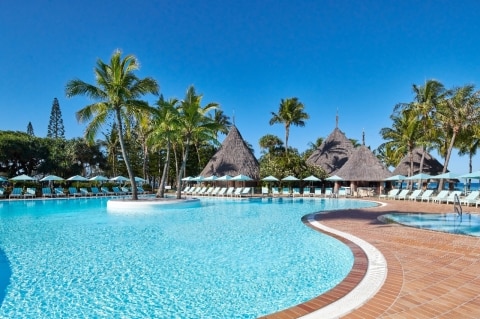15 Magical Things to Do in the Solomon Islands
Among the tourism hotspots of the Pacific, such as Fiji and Vanuatu, Solomon Islands is way down the list, welcoming just 20,000 tourists each year. But Solomons lives up to the name: a veritable goldmine of attractions awaits the curious visitor to this archipelago of almost 1000 islands. World-class diving, traditional villages, great fishing, luxurious resorts and eco-lodges, historical sites, perfect beaches and a glorious dearth of wi-fi are among them.
The good news? It’s right on our doorstep – just a three-hour flight from Brisbane. The bad news? There is none. As they say here, “Welkam to the hapi islands”.

Dive deep
1/16Solomon Islands has some of the best diving in the world. There are pristine reefs, World War II wrecks, a plethora of marine life such as barracuda, parrotfish, sea fans and pygmy seahorses and incredible geological formations including lava tubes known as the Twin Tunnels at Tulagi and Leru Cut, an indent that allows divers to swim into the interior of Leru Island.

Shop with locals at the Central Market
2/16Most Solomon Islanders reside in rural villages but Honiara, on the northwestern coast of Guadalcanal, is a burgeoning capital with a population of about 84,000. To get a real taste of Solomon Islands, head to the Central Market (pictured), a must-do shopping experience. It’s the Solomon supermarket: locals head here daily for fresh food; it’s also an important social event, a hub of activity and bustle. Tourists should go for the atmosphere but can also pick up local handicrafts and the sweetest pineapple you’ve ever tasted.

Visit the island where JFK was a castaway
3/16Before he was president, John F. Kennedy was stationed on Lubaria Island during World War II. He was patrolling with his crew when they were struck by a Japanese destroyer. Their boat sank and two crewmen were killed. Kennedy and the survivors survived for several days on coconuts before two local scouts found them and suggested Kennedy jot a rescue message on a coconut shell. The islanders delivered the message and the crew were saved; later, as president, Kennedy kept the coconut shell on his desk in the oval office. Kasolo Island was renamed Kennedy Island in his honour and although its gently swaying palms seem a world away from the violence of war, physical reminders of those events are everywhere you look.
Image credit: Getty Images
Explore WWII history
4/16As an important WWII outpost, Solomon Islands is scattered with relics from the Allies and the Japanese, slowly being reclaimed by the jungle. Many items, however, have been salvaged and are displayed in fascinating museums such as the Vilu War Museum in Honiara and the Peter Joseph WWII Museum in Munda, named for the first dog-tag that curator Alphy Paulsen found. Sadly, the tag has never been claimed. Paulsen regularly scours the jungle, adding to the piles of Coca-Cola bottles, Bakelite radios, ammunition and weaponry displayed in his museum.
Immerse yourself in village life
5/16Located east of Papua New Guinea, Solomons’ many islands are inhabited by Melanesian, Polynesian and Micronesian cultural groups whose focus on traditional ways of life sees Solomon Islands villages functioning much the same way as they have for hundreds of years. Solomon Islanders are proud of their customs and traditional values, known in Pijin as “kastom”. Visitors are welcomed in many villages, such as those in Lau Lagoon in Malaita. The lagoon has more than 60 artificial islands where locals, who call themselves “salt-water people” reside in thatched huts, fish the clear waters and grow taro and yam. There isn’t any formal accommodation in most Solomons villages but chiefs can place visitors in a homestay with a host family.
Image credit: Papatura Solomon Islands / Instagram
Go surfing way off the beaten track
6/16There’s no jostling for waves in the Solomons, just impressive swells and reef breaks in dozens of locations known to only the most dedicated of travelling board-riders. For an immersive experience, be led by the experts at Papatura Solomon Islands retreat on the island of Santa Isabel. The company offers guided surfing excursions to over 10 of the best local breaks, while also giving back to the islands through turtle release and recycling programs.
Watch rare birds
7/16For the bird-lovers among us, Solomon Islands is a paradise of rare and endemic bird species. For truly intrepid twitchers, some of the most gratifying bird-spotting happens at altitude. Try Kolombangara Island, where Imbu Rano Lodge, built atop a ridge overlooking the Vila River valley, offers a purpose-built viewing deck.
Image credit: Getty Images
Tread lightly
8/16Tetepare Island is the largest uninhabited tropical island in the Southern Hemisphere and the site of an ambitious conservation project. Traditional owners refused offers from loggers and now its 120 square kilometres of virgin rainforest is some of the last remaining in Melanesia. Here, a huge variety of plants and animals such as the pygmy parrot and coconut crabs live in the thickly forested interior of the island, while endangered leatherback turtles, bottlenose dolphins and dugongs cruise the surrounding reefs. Stay at the Tetepare Ecolodge in a leaf hut on the edge of the rainforest and fall asleep to the gentle lap of the lagoon. By day, explore the surrounds and take part in activities such as turtle-monitoring and traditional cooking classes.
Image credit: Sanbis Resort
Make like the Swiss Family Robinson
9/16The South Pacific evokes shipwrecks, white sand and the heady scent of frangipani mingled with the smoke from a beach barbecue cooking the day’s catch. Cast yourself in the role of castaway and take up residence at Sanbis Resort. There are just six bungalows, each with their own private beach. The eco-resort caters to only 12 guests at a time so it’s possible to imagine you’ve got the place to yourself – until you require a wood-fired pizza or a Mai Tai, that is.
Image credit: Getty Images
Watch her blow
10/16Observe Tinakula, an 851-metre-high, 3.5-kilometre-wide active volcano in the Santa Cruz islands from the safety of a boat. It last erupted in early 2024 as part of an eruptive period that began in 2018, but dramatic plumes of smoke billow and glowing boulders and loose ash continue to spew forth, rolling down its slopes and into the sea. For a different view of volcanic activity, dive down to Kavachi Corner, a spot near active Kavachi submarine volcano in the New Georgia islands. It’s been erupting regularly since its first recorded eruption in 1939 and divers can hear it rumbling beneath the surface – and, sometimes, emitting a jaw-wobbling judder.
Image credit: Evis Resort
Eat lobster every day
11/16Lobster pizza, barbecued lobster, lobster in coconut milk and even lobster omelette for breakfast: it’s possible to dine on lobster for every meal in Solomons. Our recommendation? Eco-friendly Evis Resort's restaurant on Nggatirana Island serves seafood with a French fusion twist, sourcing their lobster daily from local waters.
Try a betel nut
12/16As soon as you touch down in Honiara, you’ll notice a distinctive red tinge to some of the locals’ teeth. This is the betel nut grin, caused by regular chewing of the betel nut, which has a mildly euphoric effect. The betel nut is the seed of the Areca palm and it’s sold all over the islands. A few slices of the nut are wrapped in betel leaf along with a little calcium hydroxide (slaked lime) powder and sometimes some spices for flavour. The taste? Mildly peppery and a little bitter.
Learn the true tale of Solomons
13/16Since the Spanish became the first Europeans to pay a visit, the sovereign state, made up of six major islands and hundreds of smaller ones, has seen a good deal of upheaval. It was declared a British protectorate in 1893 and saw battle during WWII. It became independent in 1978. There followed a civil war from 1999 to 2003 and a devastating tsunami and earthquake in 2007. Solomon Islands National Museum in Honiara documents this history and has some fascinating artefacts.
Go on a digital detox
14/16If you’re seeking a true from escape from daily life, it’s necessary to check out of emails, Facebook and yes, Instagram. Forget capturing that glorious sunset for the ’gram and just soak it up, analogue style (with your eyes). And if you’re finding it hard, Solomons will take care of it for you: Wi-Fi is patchy at best.
Keep your head at ghoulish Skull Island
15/16Skull Island in the Western Province is where the heads of tribal chiefs and defeated enemies – head-hunters and the head-hunted – now reside. Dating to the 19th century, when headhunting raids were commonplace, the skulls are displayed in elaborate shrines decorated in shell money (shaped and polished shell fragments once used as currency). It’s important not to visit Skull Island without permission of the local chief and the accompaniment of a guide. Dire consequences may lie ahead for anyone who dares: according to local lore, if certain rituals aren’t performed before a visit, spirits could harm visitors.
Image credit: Martin Valigursky - stock.adobe.com















